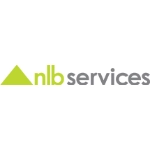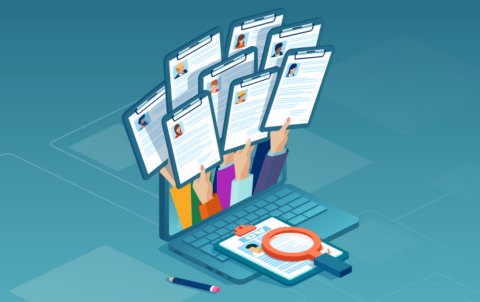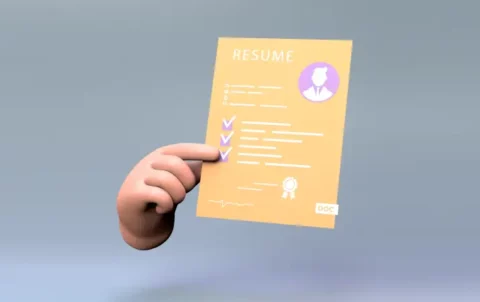© 2025 Next Level Business Services Inc. All Rights Reserved.
Are You Ready for an AI-powered Interview? How to Prepare
By NLB Services
If you have applied for a job in recent years, there’s a good chance your first interaction wasn’t with a recruiter. It was with an algorithm or a bot trained by AI. AI-powered interviews are no longer the talk of the future. They’re already reshaping the hiring process across industries. In 2025, more than 87% of companies use AI at some stage in their recruitment process. From resume screening to video interviews, artificial intelligence is, in essence, becoming the gatekeeper to your next opportunity.
And if you’re a bit overwhelmed by the idea of being interviewed by artificial intelligence, you’re not alone. Many job seekers are discovering that knowing about AI interviews isn’t just a nice-to-have anymore; it’s becoming essential as more companies adopt these technologies to streamline their hiring processes, and candidates must be AI-ready to secure the desired position. In this blog, we will explore how to prepare for an AI-powered interview and check your readiness for one.
What is an AI-powered Interview?
If we were to break it down in simple terms, here is what it looks like: An AI-powered interview uses artificial intelligence to conduct initial screening interviews with candidates. Think of it as having a conversation with a very sophisticated computer program that’s designed to evaluate your responses, communication style, and even your body language.
These aren’t your typical chatbot interactions, though. Modern AI interview platforms can conduct complex conversations, ask follow-up questions, and analyze everything from your word choice to your facial expressions. Some platforms like HireVue, Pymetrics, and Spark Hire use AI to assess candidates before they ever speak with a human recruiter.
This begins with you receiving an invitation to complete an “automated interview,” you log into a platform, and you’re presented with either pre-recorded questions or real-time AI interactions. You might answer questions via video, text, or even through gamified assessments. The AI then processes your responses and provides insights to the hiring team on whether you are a good fit or what to do next.
What do AI Tools Analyze?
In order to prepare for an AI interview, you must understand, “What exactly is this AI looking for?” And the answer might just surprise you – it’s analyzing way more than just your answers.
Your verbal responses are the obvious starting point. The AI examines your word choice, how you structure your sentences, and whether you’re addressing the question directly. It’s looking for keywords related to the role and assessing how well you articulate your thoughts.
But here’s where it gets interesting. Your tone and speech patterns are also under the microscope. The AI can detect confidence levels, enthusiasm, and even stress markers in your voice. It’s like having a conversation with someone who never misses a subtle cue.
Facial expressions and body language play a huge role too. Some systems track micro-expressions, eye contact patterns, and posture changes. Before you freak out – this isn’t about judging your appearance. It’s about understanding your communication style and confidence level.
Response timing is another factor. How quickly do you start answering? Do you take long pauses? The AI notices these patterns and incorporates them into its assessment.
However, you must know that a skilled recruiter can pick up on these cues during a face-to-face interview; AI is simply doing the same thing, just with more consistency and without human biases. If planned and executed meticulously, this can work in your favor.
How to Prepare for your AI Interview?
Now for the million-dollar question: how do you nail an interview when your interviewer processes data points precisely every time? The good news is that solid interview preparation still applies, but some AI-specific strategies can give you an edge.
Master the basics with AI interview practice
Just like you’d practice for a human interview, you need to rehearse for AI interactions. Use platforms that offer AI interview questions and answers to familiarize yourself with the format. Practice speaking clearly and at a steady pace. AI systems work best when they can easily process your speech.
Optimize your technical setup
This isn’t just about having good internet, though that’s crucial. Position your camera at eye level, ensure good lighting (natural light works best), and test your microphone beforehand. AI systems are only as good as the data they receive, so crisp audio and clear video are your friends.
Structure your responses strategically
AI loves clear, organized answers. Use the STAR method (Situation, Task, Action, Result) for behavioral questions, and don’t be afraid to signpost your responses with phrases like “First,” “Additionally,” and “In conclusion.” This helps the AI follow your logic.
Speak naturally, but be mindful of keywords
While you shouldn’t sound like you’re reading from a script, incorporating relevant industry terms and job-specific keywords can help. If you’re applying for a marketing role, naturally, work in terms like “campaign optimization,” “conversion rates,” or “brand awareness.”
Maintain good “eye contact” with the camera
This feels weird at first, but looking directly at your camera lens (not the screen) creates the impression of eye contact. It signals confidence and engagement to the AI system.
Practice your storytelling
AI systems are getting better at understanding context and narrative flow. Instead of giving robotic, bullet-point answers, tell compelling mini-stories that showcase your skills and experience.
Prepare for unexpected question formats
AI interviews might include situational judgment tests, personality assessments, or even problem-solving games. Stay flexible and approach each component with curiosity rather than anxiety.
Time your responses appropriately
Most AI interview platforms have time limits for responses. Try keeping your answers concise but comprehensive, around 60-90 seconds for most questions.
Here’s a pro tip that you don’t want to miss: show enthusiasm through your voice and expressions. AI systems can detect emotional cues, so let your genuine interest in the role shine through. Don’t be monotone, vary your inflection and pace just like you would in a regular conversation.
Review common AI interview questions beforehand
While every interview is different, certain questions pop up frequently in AI-powered interviews: “Tell me about yourself,” “Why are you interested in this role?” and “Describe a challenge you overcame.” Having polished versions of these responses ready will boost your confidence.
Conclusion
Whether you’re a seasoned professional or just starting your career, investing time in AI interview preparation isn’t just smart, it’s essential. The job market is competitive, and being ready for whatever interview format comes your way gives you a significant edge.
The advent of AI interviews isn’t something to fear. It’s simply the next evolution in how companies find great talent. Just like candidates adapted to video interviews during the pandemic, you can also master AI-powered interviews with the right preparation and mindset.
Keep this point in mind: the fundamentals haven’t changed. Companies still want to hire people who can solve problems, work well with others, and contribute to their success. AI is just a new tool in the screening process, not a replacement for human judgment.
The candidates who’ll thrive in this new landscape are those who embrace the technology while staying authentically human. Practice with AI interview platforms, refine your storytelling, and remember that behind every AI system is a hiring team looking for someone just like you.
Frequently asked questions
- What types of roles use AI interviews the most?
Currently, AI interviews are most commonly deployed in sectors with high hiring volumes, such as customer service, retail, hospitality, and entry-level roles across diverse industries. While tech firms and large enterprises have led the adoption, usage is quickly spreading to fields like healthcare, finance, and even senior-level hiring. What drives implementation isn’t the industry itself—it’s the sheer number of applications a company handles.
- Are AI tools biased?
This is a crucial question that’s actively being addressed by the industry. AI systems can inherit biases from their training data or programming, potentially disadvantaging certain groups. However, many argue that AI can actually reduce human bias by focusing on consistent criteria rather than subjective impressions. The best practice is for companies to regularly audit their AI tools for bias and use them as part of a broader, fair hiring process rather than the sole decision-maker.
- Can AI really evaluate my communication skills?
AI has become surprisingly sophisticated at analyzing communication patterns, including clarity, confidence, listening skills, and even emotional intelligence markers. It can assess factors like response relevance, vocabulary usage, and verbal fluency. However, AI evaluation works best when combined with human assessment, especially for roles requiring nuanced interpersonal skills or creative thinking.
- Are AI interviews only used for tech jobs?
Not at all! While tech companies were early adopters, AI interviews are now used across virtually every industry.
- Can I ask for a human interview instead of an AI one?
You can certainly ask, and many companies will accommodate reasonable requests, especially if you have accessibility needs or technical limitations. However, some companies use AI interviews as a mandatory first step in their process. The best approach is to inquire politely about the format during the application process. Remember, completing the AI interview successfully often leads to human interviews in later rounds, so it’s worth embracing the process as part of your overall interview strategy.
Talent Solutions








